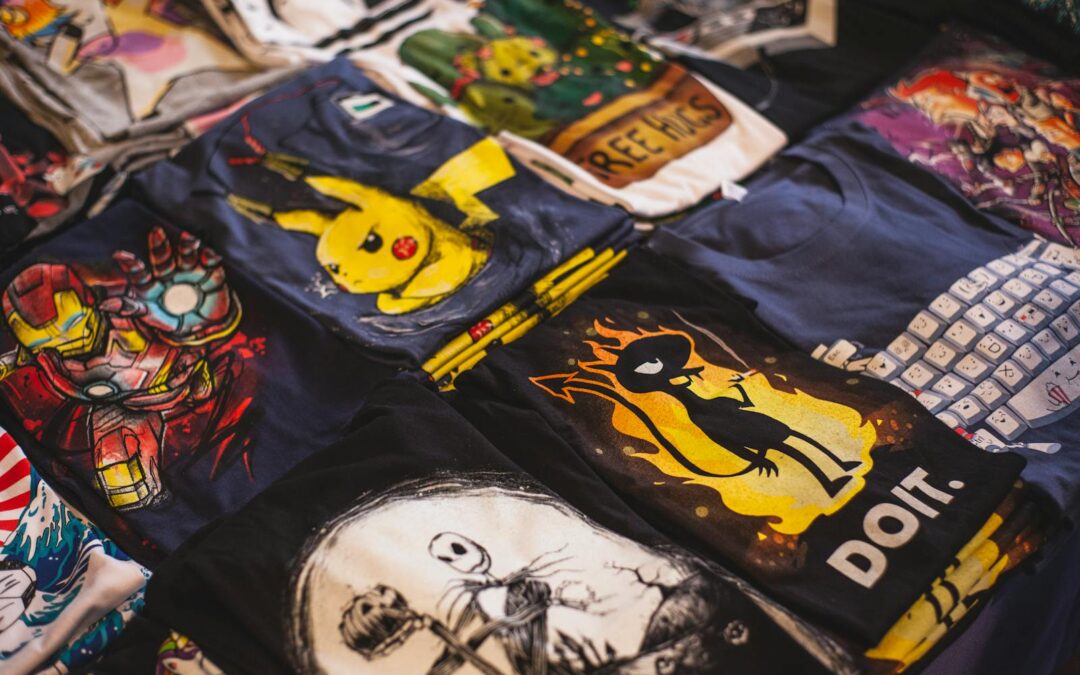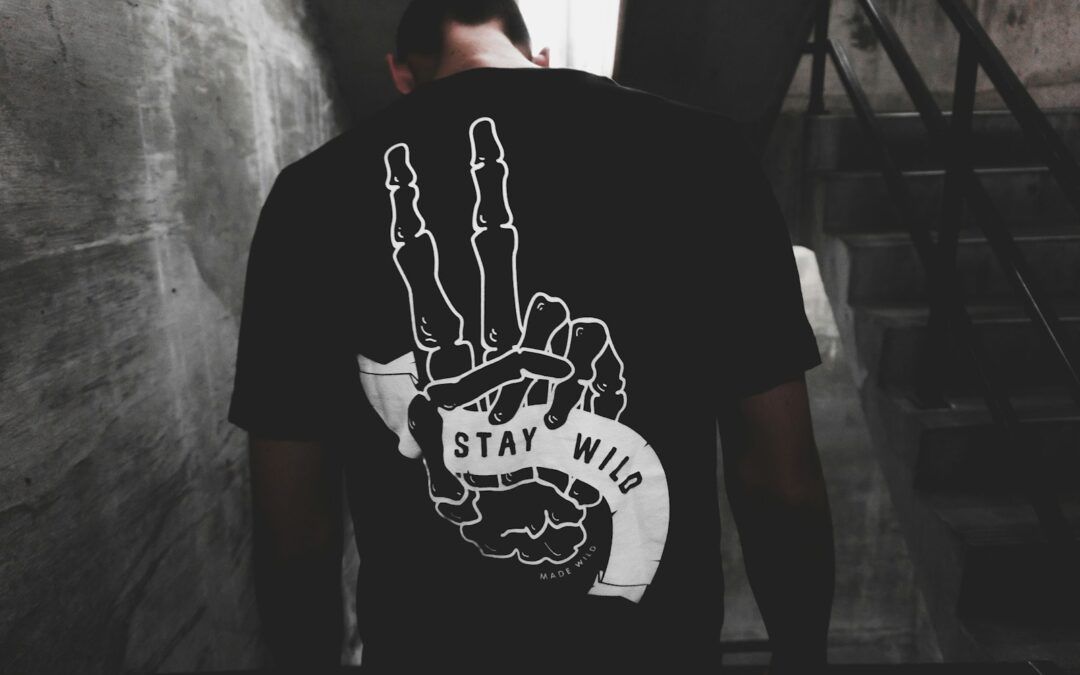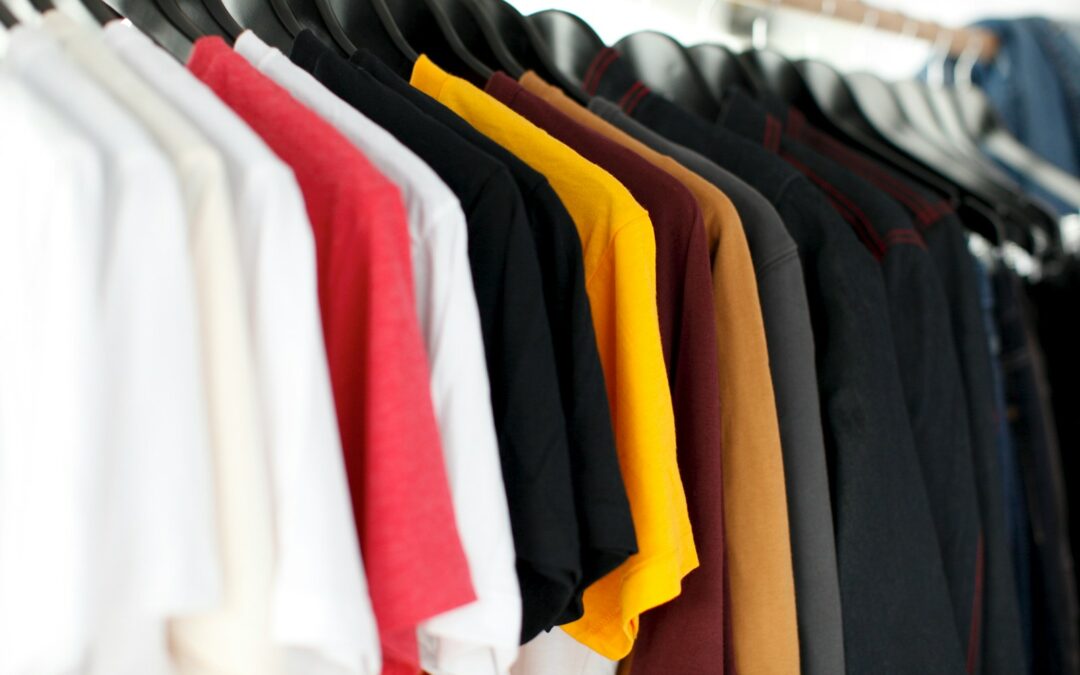The debate of DTF vs Sublimation is still an ongoing debate, and here’s what we have gathered for you below!
The world of custom apparel printing is a tapestry of techniques and technologies, each strand offering unique textures and patterns to fabricate bespoke designs. Coupled with the evolving trends in design and consumer demands, businesses must weave their way through the industry’s diverse options to create a masterpiece. Among the prominent patterns are DTF printing and dye sublimation printing, two methods that are ribboned with varying shades of benefits and challenges. But which thread is best suited for your professional loom?
In this comprehensive blog post, we’ll dissect the fabrics of DTF vs sublimation printing, examining each method’s intricacies to provide you with the swatches you need to make an informed decision about your custom apparel business.

Understanding DTF Printing and Its Benefits: DTF vs Sublimation
DTF (Direct to Film) printing is rapidly gaining traction in the world of textile printing due to its versatility and capacity for high-quality results. At its core, DTF printing involves a simple yet effective process of heat transfer: designs are first printed onto a clear film and then transferred onto fabric using a heat press. This method stands out for several reasons.
Wide Range of Fabrice and Materials
Firstly, it bypasses the limitations of direct garment printing by allowing designs to be applied to a wide variety of textiles, including those that are traditionally challenging, like dark-colored fabrics or materials with high cotton content. This versatility opens up new opportunities for businesses and designers looking to expand their product range.
DTF Print is Vibrant And High-Quality
Secondly, the quality of DTF prints is noteworthy. The colors are vibrant, and the details are crisp, producing eye-catching results that last. The prints are also remarkably durable, enduring repeated washing without fading or peeling, a critical factor for apparel and accessories expected to maintain their appearance over time.
Cost Affective for Both Large Scale or Small Batch Orders
Finally, DTF printing offers a cost-effective solution for both large-scale production and custom, small-batch orders. Without the need for extensive setup or significant upfront costs, DTF printing enables businesses to offer personalized products and limited-edition designs without compromising on quality or profitability.
Understanding the nuances of DTF printing, from the process of digital printing itself to the types of inks and films used, is crucial for anyone considering this technology for their printing needs. By tapping into this method’s full potential, businesses can explore new creative avenues, enhance their product offerings, and meet the growing demand for customized textile products.

Frequently Asked Questions (FAQ) about DTF Printing
In this FAQ section, we aim to address the most common inquiries regarding DTF printing, providing you with a clearer understanding of how this innovative technique can be leveraged to enhance your printing projects and meet your specific needs.
Whether you’re exploring DTF printing for the first time or looking to optimize your existing processes, these insights will guide you through the nuances of DTF printing applications so you can decide how you feel about DTF vs sublimation.
Q: What is DTF printing and how does it differ from DTG and sublimation?
A: Direct to Film (DTF) printing is a process where designs are printed onto a special film and then transferred onto fabric using heat. Unlike DTG, which prints directly onto the garment, DTF prints onto a film that is then applied to the garment. Compared to sublimation, DTF can be used on a wider variety of fabrics and colors, including dark textiles.
Q: What types of fabric can DTF printing be used on?
A: DTF printing is versatile and can be applied to many types of fabrics, including cotton, polyester, and blends. This makes it an attractive option for businesses that work with a wide range of garments.
Q: Is DTF printing durable?
A: Yes, DTF prints are known for their durability and washability. The adhesion technology used in DTF printing ensures that the prints are resistant to wear and tear, making them suitable for everyday wear and frequent washing.
Q: What are the environmental impacts of DTF printing?
A: DTF printing involves the use of PET films and specialized inks, which do have an environmental footprint. However, advances in eco-friendly inks and recyclable film materials are helping to mitigate these impacts. Like all printing methods, focusing on sustainability in the choice of materials and processes is key.
Q: Can DTF printing be used for small, custom orders?
A: Absolutely, DTF printing is well-suited for small, custom orders. The process allows for high-quality, detailed prints without the need for large minimum orders, making it a popular choice for personalized apparel and short-run production.
Q: Do I need special equipment for DTF printing?
A: Yes, DTF printing requires a specialized printer capable of printing on the DTF films, DTF inks, a powder shaker, and a heat press to cure the ink and apply the print to the fabric. While the initial investment in equipment may be significant, the versatility and quality of DTF prints can offer a good return on investment for printing businesses.

Understanding Sublimation Printing And The Benefits: DTF vs Sublimation
Sublimation printing stands as a revolutionary printing technique used in the textile industry, offering unparalleled quality and durability for designs that demand vibrancy and permanence. Central to sublimation printing is the transition of special sublimation ink from a solid directly to a gas under high temperature, allowing it to bond with polyester fabrics and polymer-coated substrates without passing through a liquid phase. This unique process results in designs that are not only striking in color but also embedded within the fabric itself, thus ensuring they don’t crack, fade, or peel over time.
Vibrant Printing for All Over Prints and Designs
One of the primary advantages of the sublimation printing technology is its ability to produce fully vibrant prints across the entire fabric, enabling all-over designs that are not possible with many other printing methods. This characteristic is especially beneficial for creating custom sportswear, flags, banners, and other items where color intensity and coverage are critical.
However, sublimation printing does have its limitations ; it is most effective on light-colored, 100% polyester materials. This specificity can restrict the range of products suitable for sublimation but also guarantees quality and durability for compatible items. Additionally, though the upfront costs might be high due to the need for specialized ink, printers, and heat presses, the efficiency and low waste of the sublimation printing process can offer a favorable return on investment in the long term.
Positive Environmental Impact
In the context of environmental impact, sublimation printing is noted for its minimal waste production. Since the ink transforms directly from solid to gas, there are no solvents used, reducing the risk of harmful discharge. This aspect aligns well with the growing demand for sustainable and eco-friendly fabric printing solutions, making sublimation printers an attractive option for businesses aiming to lower their environmental footprint.
Understanding the intricacies of dtf printing and sublimation printing is crucial for those involved in the textile industry, particularly for businesses that specialize in sportswear or other polyester-based products. By leveraging the strengths of both sublimation and DTF printing techniques, companies can significantly broaden their product offerings and cater to a wider range of customer preferences, all while maintaining high standards of quality and sustainability.

Frequently Asked Questions (FAQ) about Sublimation
In our dedicated “FAQ about Sublimation” section, we aim to demystify sublimation printing by offering comprehensive answers to the most frequently asked questions.
Whether you are venturing into sublimation printing for the first time, considering it for your next project, or seeking to refine your current practices, this section is designed to provide you with deep insights and practical advice on harnessing the full power of sublimation printing in your textile endeavor
Q: Can sublimation printing be done on any type of fabric?
A: No, sublimation printing works best on 100% polyester fabrics or polymer-coated items. The process binds the ink to the fabric at a molecular level, a transfer process which is most effective with synthetic materials like polyester.
Q: How durable are sublimation prints?
A: Sublimation prints are highly durable. The ink becomes a part of the fabric, which means the design won’t crack, peel, or wash away over time. This makes sublimation ideal for sportswear and other garments that undergo frequent washing.
Q: Is sublimation printing environmentally friendly?
A: While no industrial process is entirely ‘green,’ sublimation printing is considered more environmentally friendly than some alternatives. It produces no wastewater and requires less energy, making it a preferable option for eco-conscious businesses.
Q: Can I use sublimation printing for short-run orders?
A: Sublimation printing is typically more cost-effective for larger runs due to the initial setup costs and method of printing. However, it can be used for short runs, keeping in mind that the cost per item may be higher compared to larger batches.
Q: Why can’t sublimation be done on dark fabrics?
A: Sublimation dyes are transparent, meaning the color of the fabric can greatly affect the outcome of the print. Since sublimation cannot apply a white underbase like some other methods, designs won’t show up clearly on dark fabrics.
Q: Do I need special equipment for sublimation printing?
A: Yes, sublimation printing requires a sublimation printer, sublimation, inkjet technology, transfer paper, and a heat press. Investing in high-quality equipment is crucial for achieving the best possible results with this method.

Comparing DTF vs Sublimation
When selecting the ideal printing method for your apparel or merchandise, the choice often narrows down to Direct to Film (DTF) and Sublimation printing. Both techniques offer unique advantages, dependent largely upon the project’s requirements and the fabric’s nature.
DTF
DTF printing shines in its versatility, allowing for high-quality prints on a vast array of fabrics and colors, including dark textiles. This makes it an exemplary choice for detailed designs on cotton, polyester, and blends, catering to a broad market segment. Its durability and ability to handle intricate designs without requiring a large minimum order also make the DTF printer an attractive option for personalized or small batch orders.
Sublimation
On the other hand, Sublimation printing boasts unrivaled vibrancy and durability on polyester and polymer-coated substrates. It’s the go-to for sportswear and garments that endure frequent washing, given that the ink fuses directly with the fabric, ensuring the design’s longevity. However, its limitation to light-colored and polyester fabrics can be a constraint for broader apparel lines.
Both methods have distinct environmental footprints which are gradually being minimized through technological advancements and more sustainable practices. While DTF uses PET films that require proper disposal, it opens up options for recycling. Sublimation paper is recognized for its minimal waste production and energy efficiency, aligning with eco-friendly business practices.
Ultimately, the choice between DTF vs Sublimation will depend on your project’s specific needs, from the type of fabric and desired vibrancy to longevity and environmental impact of printed products. Experimenting with both methods and understanding their unique benefits will help determine the best fit for your printing endeavors.
Consider Limitless Transfers as your premier destination for all your direct to film printing requirements and projects. Our key commitment is to consistently deliver crowd-pleasing, high-grade results in a timely manner, ensuring you’re well-equipped to share the passion and projects.
Every order we receive is treated as a unique masterpiece, meticulously crafted with precision, attention to detail, and a touch of holiday enchantment.

Conclusion for DTF vs Sublimation: Pairing the Perfect Technique with Your Tapestry
In the dynamic canvas of custom apparel printing, DTF vs sublimation emerge as two bold strokes, each adding distinctive value to the canvas.
Share your experiences and continue the conversation with fellow craftsmen in the field. Test the threads, admire the fabric, and stitch a tale worth wearing on the design runway. The choice between DTF vs sublimation is not just about the print quality; it’s about the passion you infuse into your craft, the value you deliver your clients, and the future masterpiece you are set to create.




